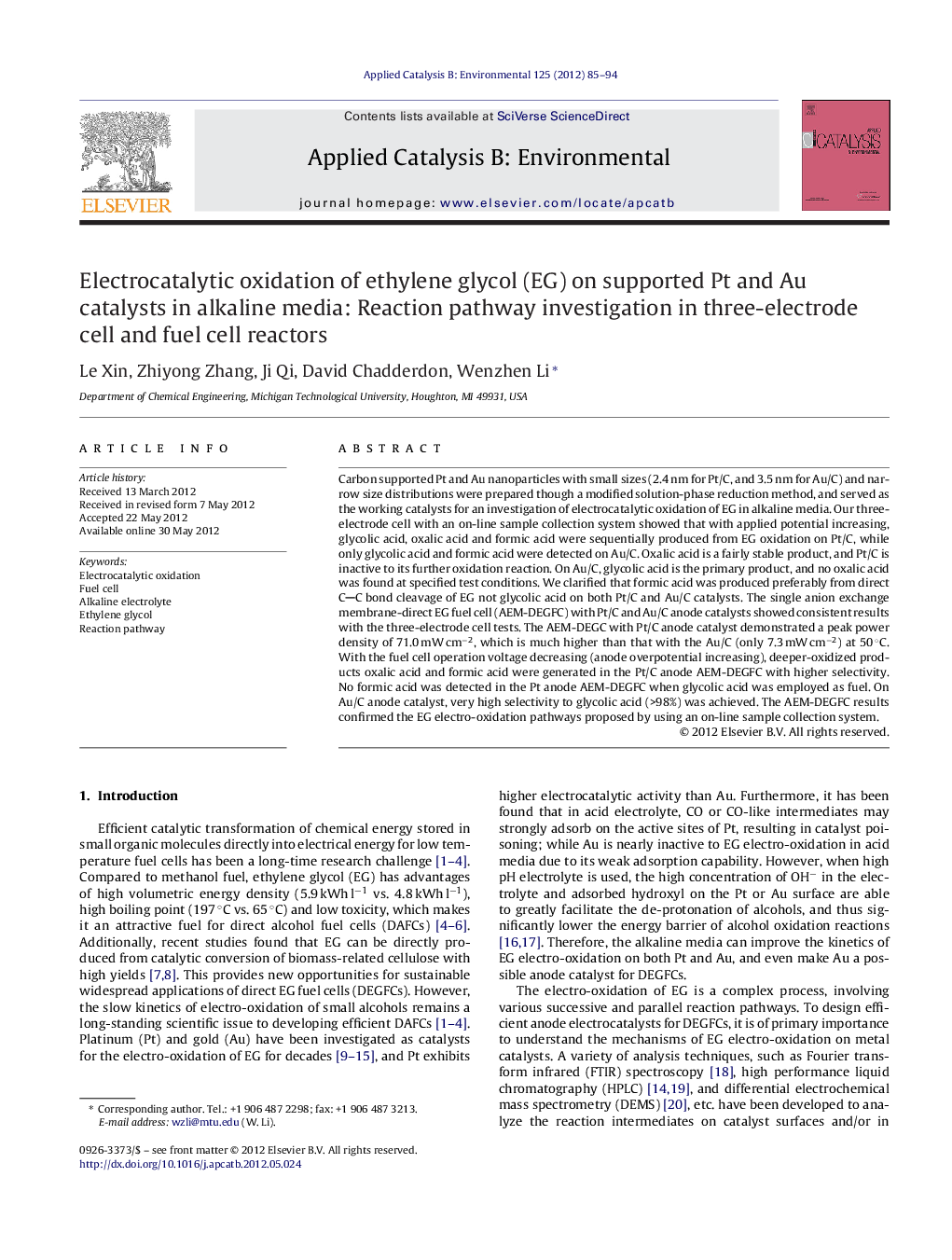| کد مقاله | کد نشریه | سال انتشار | مقاله انگلیسی | نسخه تمام متن |
|---|---|---|---|---|
| 46058 | 46429 | 2012 | 10 صفحه PDF | دانلود رایگان |

Carbon supported Pt and Au nanoparticles with small sizes (2.4 nm for Pt/C, and 3.5 nm for Au/C) and narrow size distributions were prepared though a modified solution-phase reduction method, and served as the working catalysts for an investigation of electrocatalytic oxidation of EG in alkaline media. Our three-electrode cell with an on-line sample collection system showed that with applied potential increasing, glycolic acid, oxalic acid and formic acid were sequentially produced from EG oxidation on Pt/C, while only glycolic acid and formic acid were detected on Au/C. Oxalic acid is a fairly stable product, and Pt/C is inactive to its further oxidation reaction. On Au/C, glycolic acid is the primary product, and no oxalic acid was found at specified test conditions. We clarified that formic acid was produced preferably from direct CC bond cleavage of EG not glycolic acid on both Pt/C and Au/C catalysts. The single anion exchange membrane-direct EG fuel cell (AEM-DEGFC) with Pt/C and Au/C anode catalysts showed consistent results with the three-electrode cell tests. The AEM-DEGC with Pt/C anode catalyst demonstrated a peak power density of 71.0 mW cm−2, which is much higher than that with the Au/C (only 7.3 mW cm−2) at 50 °C. With the fuel cell operation voltage decreasing (anode overpotential increasing), deeper-oxidized products oxalic acid and formic acid were generated in the Pt/C anode AEM-DEGFC with higher selectivity. No formic acid was detected in the Pt anode AEM-DEGFC when glycolic acid was employed as fuel. On Au/C anode catalyst, very high selectivity to glycolic acid (>98%) was achieved. The AEM-DEGFC results confirmed the EG electro-oxidation pathways proposed by using an on-line sample collection system.
Figure optionsDownload as PowerPoint slideHighlights
► Pt/C and Au/C with small particle size (2.4 nm, 3.5 nm) were prepared.
► Product generation sequence from EG electro-oxidation in high pH media was presented.
► Formic acid was favorably produced from CC bond breaking of EG not glycolic acid.
► >98% selectivity to glycolic acid was obtained in AEMFC with Au/C anode.
► Product distribution from EG electro-oxidation in AEMFC agreed with half cell tests.
Journal: Applied Catalysis B: Environmental - Volume 125, 21 August 2012, Pages 85–94